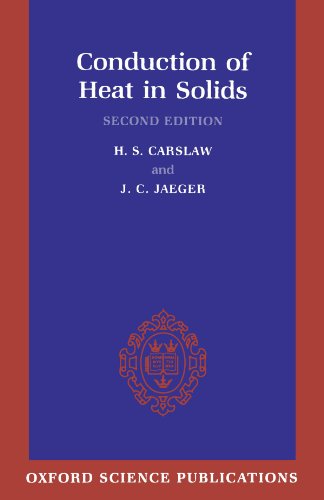Conduction of Heat in Solids pdf download
Par young heriberto le jeudi, décembre 24 2015, 00:26 - Lien permanent
Conduction of Heat in Solids by H. S. Carslaw, J. C. Jaeger


Conduction of Heat in Solids download
Conduction of Heat in Solids H. S. Carslaw, J. C. Jaeger ebook
Page: 517
Format: djvu
Publisher: Oxford University Press, USA
ISBN: 0198533683, 9780198533689
Home made 6x7 tilt shift camera, tominon 127mm f4.7,red filter, Ilford PanF 50, Ilfosol3. Heat can be transferred by three processes: conduction, convection, and radiation. Heat energy is the result of the movement of tiny particles called atoms, molecules or ions in solids, liquids and gases. Let's talk about heat – solids, liquids, and gases are made up of molecules. There is a simple solution, but first let's learn a little about heat conduction: 1. Convection; that is, the transfer of heat from one place to another through the movement of fluids or gases. You may be able to do some useful scaling of cooling times without getting a full solution. An example of conduction through contact between two solids is a cooking pot on the solid surface of a hot stove. Well, in fact there are two mechanisms of heat conduction. Conduction; that is, heat being transferred from a heated solid to an unheated solid. Conduction transfers heat energy through one substance to another when they are in direct contact. All solids (metals and non-metals) are made up of tiny particles called atoms, or groups of atoms called molecules. However, there is one important difference between metals and non-metals: metals contain Now, here comes the question: if molecular vibration is common to both metals and non-metals, shouldn't we expect both of them to exhibit similar heat conductivity? Conduction is the transfer of heat along a solid object; it is this process that makes the handle of a poker hot, even if only the tip is in the fireplace. The standard reference for analytical solutions is "Conduction of heat in solids", Carslaw & Jaeger, 1959. Monsieur Be • Conduction of heat in solids, Plage du Centre, Bidart. Heat Conduction: Lumped System Analysis – Heat Transfer in Semi infinite and infinite solids – Use of Transient – Temperature charts – Application of numerical techniques. The greatest flow of heat possible between materials is where there is a direct conduction between solids.
Communication progressive du Francais. Niveau intermediaire. Corriges pdf